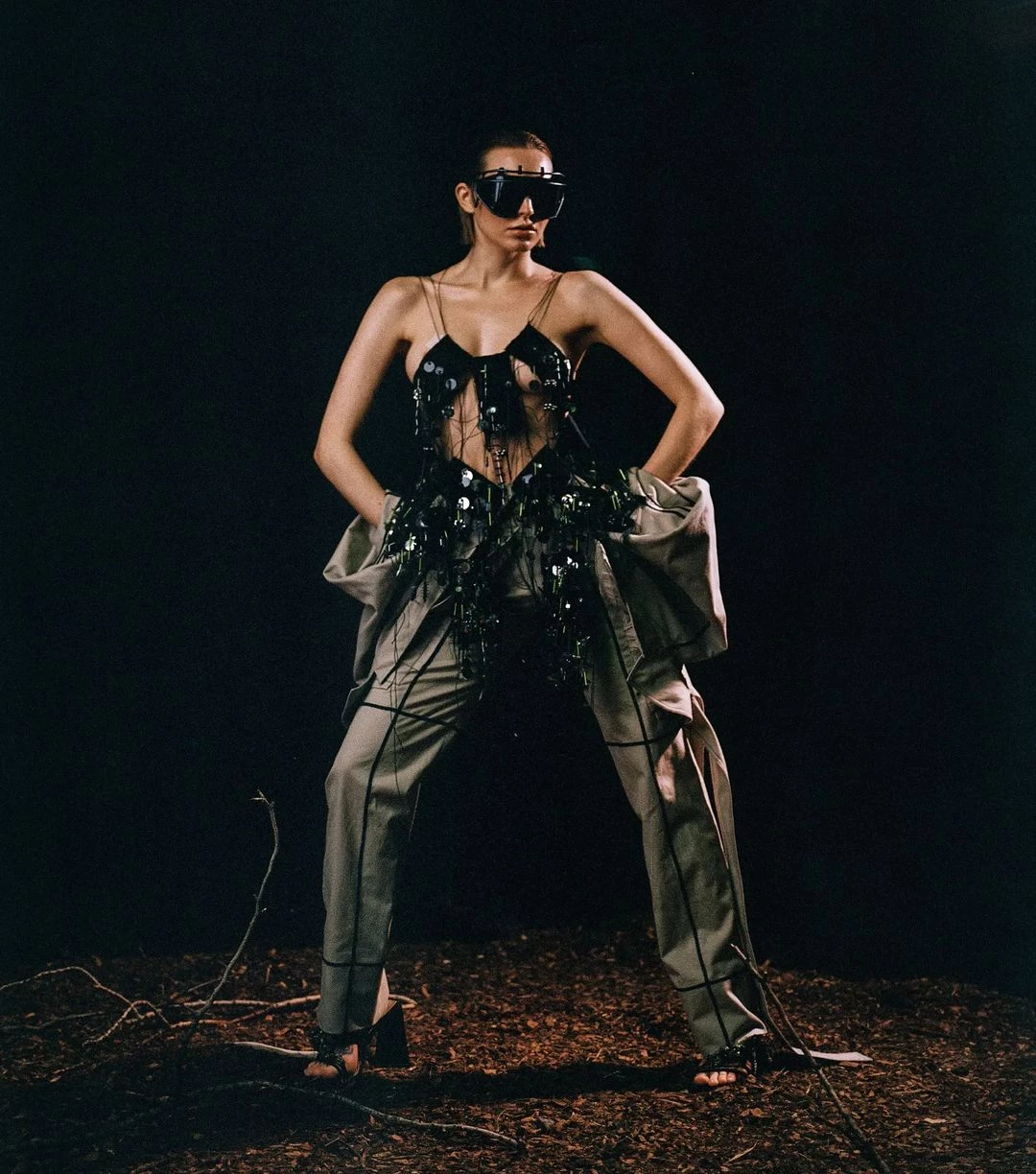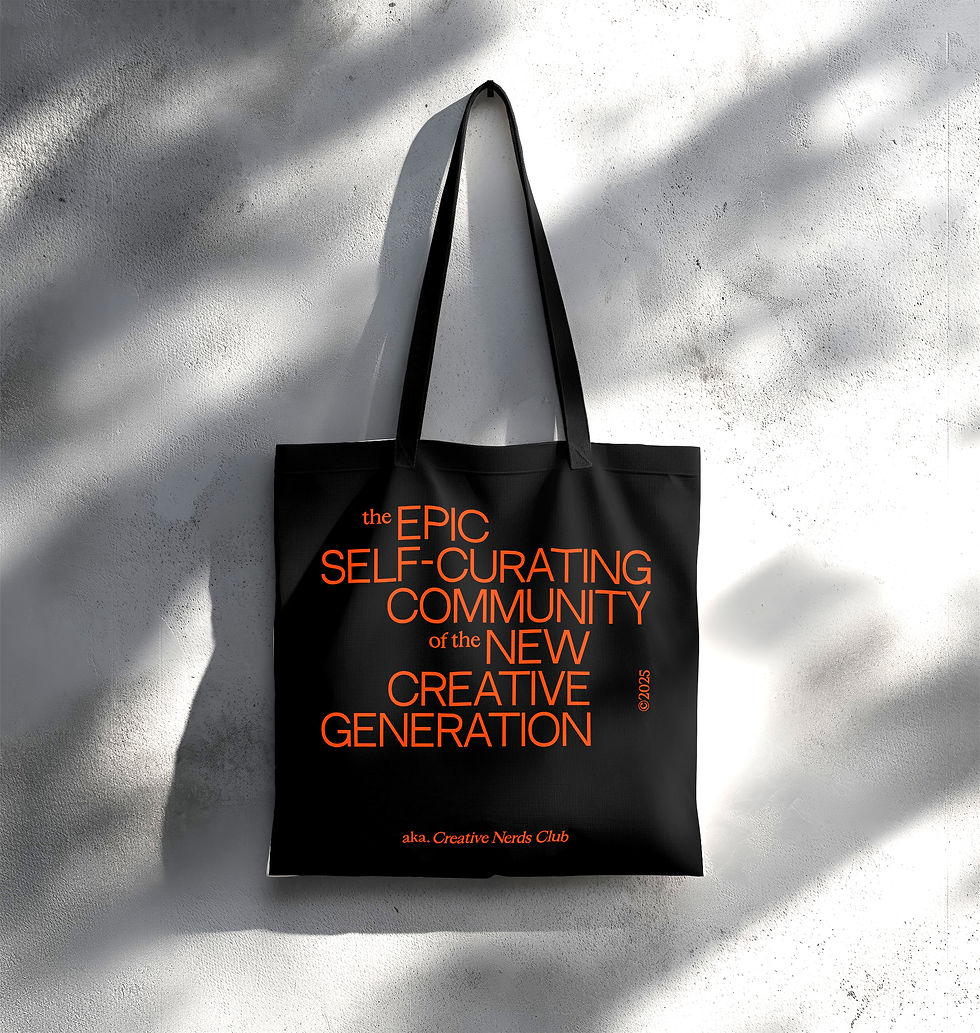Taskin Goec | Mixed Reality Designer
- Onur Çoban

- Mar 2, 2024
- 4 min read
Updated: Feb 27

courtesy Taskin Goec
Taskin Goec is a Berlin-based mixed-reality designer. He brings the principles of heritage craftsmanship into the digital landscape using emerging technologies such as custom-trained AI. There, he shapes and molds a raw sensuality, sparking visceral reactions and forging a deep connection between the digital and the human.
We talked to Taskin Goec who combines traditional and digital fashion, about his work and production practice.
Interview: Onur Çoban
Who is Taskin Goec? Can you briefly tell us about yourself?

I am a Berlin-based mixed reality designer, blending traditional and digital fashion to create hybrid collections that redefine the boundaries of design. As a London College of Fashion graduate and a member of the SYKY collective, my work comes to life on global stages, including London Fashion Week.
With a foundation in traditional craftsmanship, shaped by experiences such as Chanel’s Métiers d’Art, I integrate this heritage into the digital realm, collaborating with industry leaders like SHOWstudio, The Fabricant, and Vogue+. My commitment to innovation drives me to merge physical craftsmanship with cutting-edge technology, utilizing custom-trained AI models and digital pattern cutting to push the limits of creativity. My work stands as a testament to the seamless coexistence of heritage craftsmanship and pioneering technology, bridging the tangible and the virtual in ways that challenge and inspire the future of fashion.
As well as being a pioneer in the digital fashion world, you also embrace traditional design processes. How do you strike a balance between these two worlds?
Both realities are inseparable to me. I began designing in more traditional ways when I was a teenager and therefore a lot of this craft is deeply rooted in my approach. I am constantly reimagining both process and product because I believe that this is essential to the fashion practice - it is a reflection of the current time. And right now, I find that the digital space could profit from more sensory appeal, which is why I bring a lot of texture and grime into digital fashion.
courtesy Taskin Goec
You state that digital fashion has its limits. Which limitations are essential to overcome and discover new methods during the evolution of the digital fashion world?
While there are no limitations to the imagination, there are some technical restraints. Right now, digital clothing is still not very real-time friendly and AR applications can still have a very clunky look - ideally, we would use these on our smartphones, but they are no supercomputers yet. I am hoping that the major developments in AI technology could help to make digital fashion more praticable, by merging body tracking with AI-supported real-time rendering. This could also make styles more high-fidelity and result in more diverse aesthetics.
Can you tell us a little about the collection SYKY hosted at London Fashion Week?
My collection The Last Dance is a celebration of humanity—sweat, emotion, carnal memory—set in the technological swamp. To produce this collection’s designs, I trained a custom AI model based on my prior work and style. The looks are rich in texture, physically achieved through combinations of pleating, fraying, and printing techniques, while in the digital space, these textures are the result of intricate cloth simulations and procedural node setups. With SYKY, we dropped the digital styles as unique collectibles, which sold out in a day. The event was titled Worlds Collide as Kay Kwok and I represent opposing ideas for the future of digital fashion.

courtesy Taskin Goec
Can you tell us a bit about your production process? How do you balance creativity and technical skills in the design process?
I am not only a designer of garments but also of workflows, therefore I find creativity in the process itself. Part of every project's research phase is to work with new digital tools and this leads the way to designing. Therefore, it is very much a creative nexus between software and the human mind, especially now that I am working with custom AI models. I find that creativity is much more about disrupting craft in unexpected ways.
I wondered how texture and technique could translate in digital space and since then one of my aims is to create virtual garments that make people say "I want to touch it."
courtesy Taskin Goec
Can you tell us a bit about the inspiration behind your work? Who are the names you follow with curiosity in this field or in other disciplines?
One of the key experiences that shaped my work was to develop Haute Couture textiles in one of Chanel's Métier's d'Art ateliers. I worked with these incredible techniques that looked magical in person but often did not translate to a phone sized image. I follow many artists who redefine craft in a sensual way and who go beyond the organic/artificial dichotomy, such as Phoebe Cummings or Hai Ihwa.
Are you excited for the future, and what are your plans?
I am excited for image-to-video AI technology, for more digital/physical fashion interaction and for collaborations with platforms and tech companies. My plan is to continue building my technological swamp but also to work with brands, helping them develop custom design workflows and to reimagine products for the next generation of mixed reality ambiverts.


























































